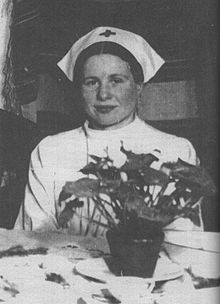Irena Senderlowa - Life in a Jar!
Irena SendlerowaIrena Sendlerowa was a social worker in Warsaw, who directed a children’s rescue group to smuggle Jewish children from the Warsaw Ghetto, providing them with false papers and placing them with substitute Polish families. Records that Irena kept showed that she was able to save nearly 2,500 children from certain death under the Nazis. Irena Sendlerowa (Irena Sendler) was born in 1910 to a Polish family living in the suburbs of the city of Warsaw. Her father was a physician, many of whose patients were Jews. During the Nazi occupation of Poland, she was a social worker with the city's Social Welfare Department and, as an employee of this Department, she had a special permit to enter the ghetto where she wore a yellow star. In secret, Irena directed a children’s rescue group to smuggle Jewish children from the Ghetto. This group was part of an organised ‘underground’ council called Zegota, set up to help Jews. When Irena managed to rescue children, she provided them with false papers and placed them with the substitute Polish families, who pretended to their neighbours that the children were relatives. When she could not find a suitable family willing to take such a tremendous risk, she placed them in Catholic institutions like the Warsaw orphanage of the Sisters of the Family of Mary, or in convents. Everyone hoped that relatives of the children might survive the Nazis and so Irena kept careful records of all the children so that they could be found easily after the war. She hid her records, which she wrote on small pieces of paper, in jars in a friend’s garden. These records showed that Irena was able to save nearly 2,500 children from certain death under the Nazis. Inevitably, Irena was found out and arrested by the Gestapo. In October 1943, she was arrested and taken to the infamous Pawiak prison, where she was brutally tortured to make her reveal information. However, despite this treatment, Irena gave nothing away and she was condemned to death. However, on the day set for her execution, other members of Zegota were able to bribe one of the Gestapo agents and, in the nick of time, Irena was rescued. Officially, however, she was listed on public bulletin boards as among those executed. Irena assumed a false identity, and continued to help the underground rescue operations, although she was forced to stay out of sight for the remainder of the war. For many years, her amazing story remained untold, but eventually, it became known. Some pupils at a school in America, researching for a history project, made it into a play called ‘Life in a Jar’ after the method Irena had used to keep track of the children. In 2003, Irena received the Order of the White Eagle, the highest Polish civil decoration. Recipient of the ‘Jan Karski Award For Valour and Compassion’, her age prevented her from attending the ceremony in the USA; the message she sent included the words : ‘But we and future generations must also remember the human cruelty and hate which led those who handed over their neighbours to the enemy, the hate which told them to commit murder. There was also indifference towards the tragedy of those who perished. ‘It is my dream that this memory become a warning to the world and that Humanity never experiences such tragedy ever again.’ Irena Sendlerowa |
|
|


